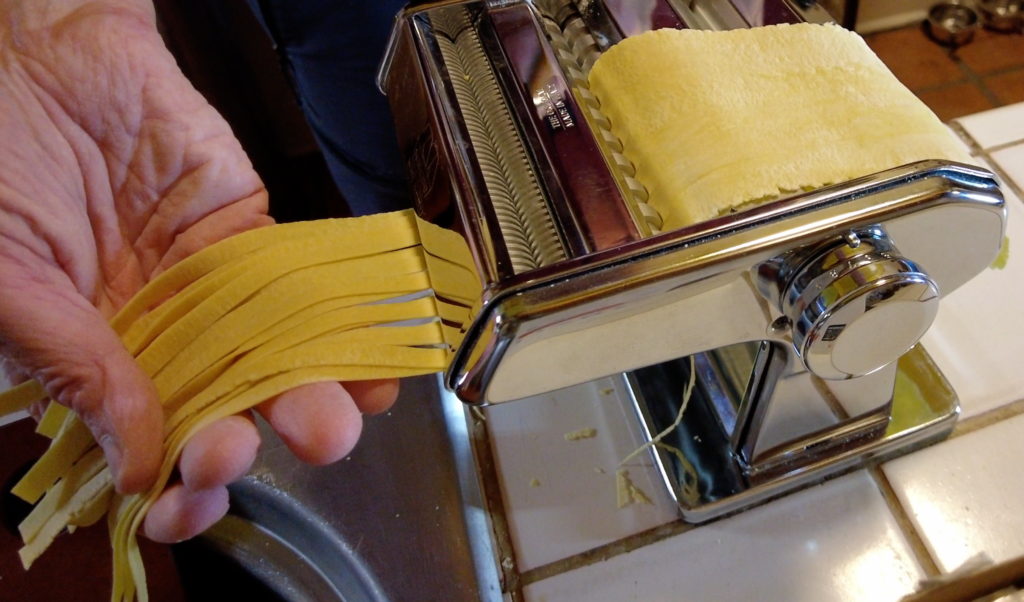
November 26, 2022. This is like a magic trick. Transform flour and eggs into fantastic fresh pasta. Pasta sheets for lasagna. Pasta noodles – fettuccine, spaghetti – for everything else. This is a Better Cheaper Slower final frontier. As great as making great bread or pizza dough from flour and water. Make the dough, then run it through this $60 pasta machine.
What you get is as good as the really good fresh pasta you’d get at a really good Italian restaurant that makes it fresh. So it’s infinitely Better than any dried pasta you can buy and make (and I really do love good dried pasta). It’s definitely Cheaper than any refrigerated “fresh” pasta you can buy – and almost surely Better because it is truly fresh. And, yes, it is really Slower. In addition to flour and eggs, you’ll need a pasta-making machine. I use this simple, hand-crank machine. It’s terrific. It’s $60. You can buy bigger, fancier machines; you can even buy an electric motorized version so you don’t have to turn the handle. I recommend the simple, compact machine for Better Cheaper Slower results.
Ingredients for 2 servings. Just multiply to make more.
5 ounces of all-purpose flour
1 whole egg
2 egg yolks
1/2 teaspoon of salt (optional)
How To
I tried several instructions and recipes. This one is the winner: the lengthy but absolutely comprehensive, complete and correct The Science of the Best Fresh Pasta from Serious Eats. This is a very long article, but if you follow the directions you’ll get great pasta every time. I made this less-than-two-minute video to give you a quick idea of what you’ll be doing if you choose to accept this mission.
Here’s my quick summary of the Serious Eats article. – to let you know what it takes. It’s a fair amount of effort for a wonderful, even transformative, result.
Mix and knead the dough
You whisk the eggs, then mix with the flour for a few minutes, first with a fork, then with a pastry scraper. Then you squeeze and press it with your bare hands. You shape it into a ball – and then you knead it for 10 minutes. No typo here – 10 minutes. It’s the only way to develop the gluten network that makes the pasta elastic and springy. Now you get a break: shape the dough into a ball, wrap it in plastic and let it rest for an hour. You may need the rest after all that kneading. The dough needs it to allow the flour to continue to hydrate by continuing to absorb the moisture from the eggs. You might use the time to prepare a sauce. I made a quick, fresh basil pesto sauce.
Roll and press the dough
Now you’ll take a few more minutes with your hands and a rolling pin to flatten the dough ball into a thin slab. Thin enough to fit between your pasta machine’s rollers when they’re set to the widest opening (depending on your machine this will be “0” or “1”). You’ll crank the dough through three times, then adjust the machine to the next (narrower) setting and run it through three more times. Now, if you want a sheet of dough with even, straight edges, you’ll fold or “laminate” the dough sheet (explained and illustrated in the Serious Eats article.
And then you’ll keep cranking. Three times through at each of five, six or seven progressively narrower settings. You’ll go very thin for pasta sheets for lasagna; not quite as thin for spaghetti; and even less thin for fettuccine. If you’re making noodles, the final pasta machine step is one run through one of the cutting rollers – to slice the sheet into noodles.
Now all you need is a pot of boiling water. But not for long. Cook your noodles for a maximum of 90 seconds. That’s all it takes when the pasta is fresh.
In the video, I make fettuccine with a quick, fresh basil pesto sauce. Man, was it good! Get the machine and start cranking. And make a mindblowing lasagna while you’re at it:
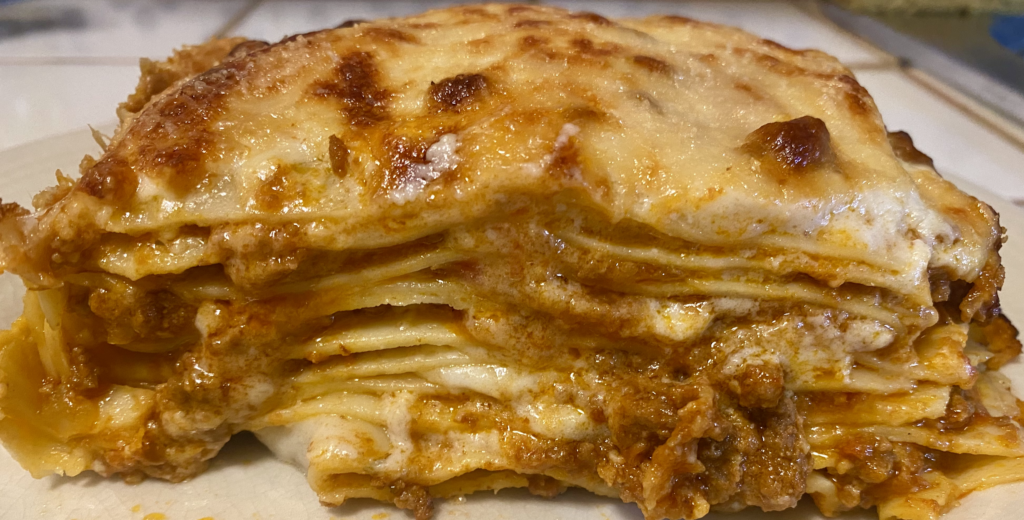
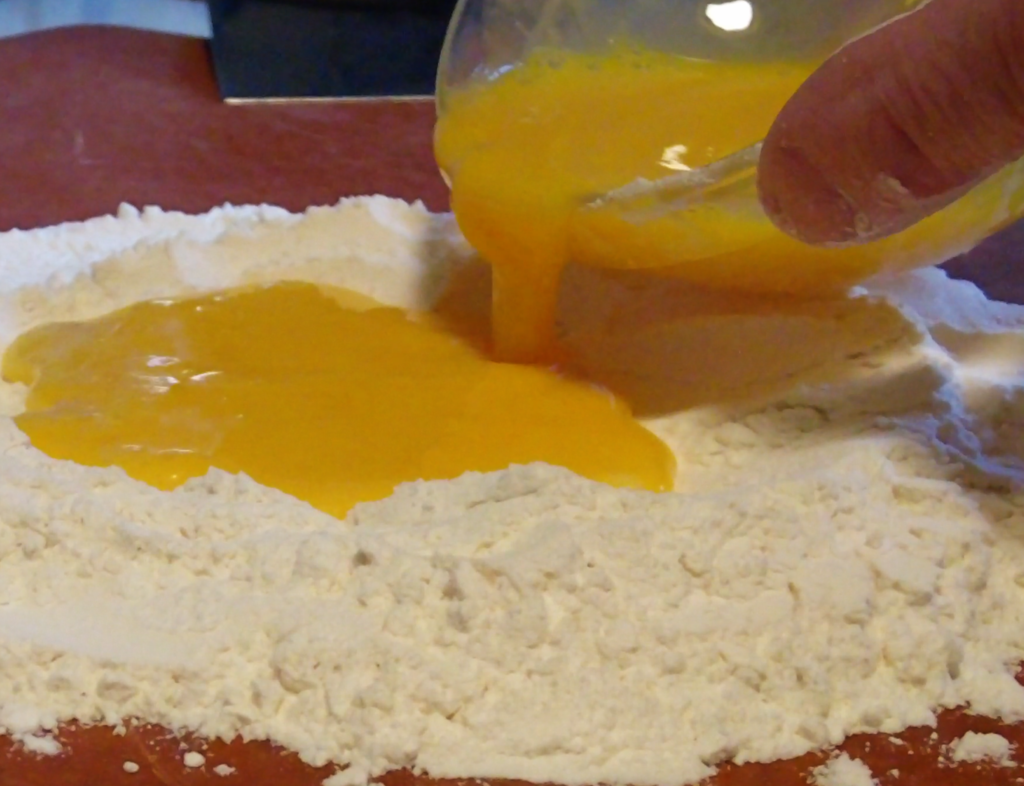
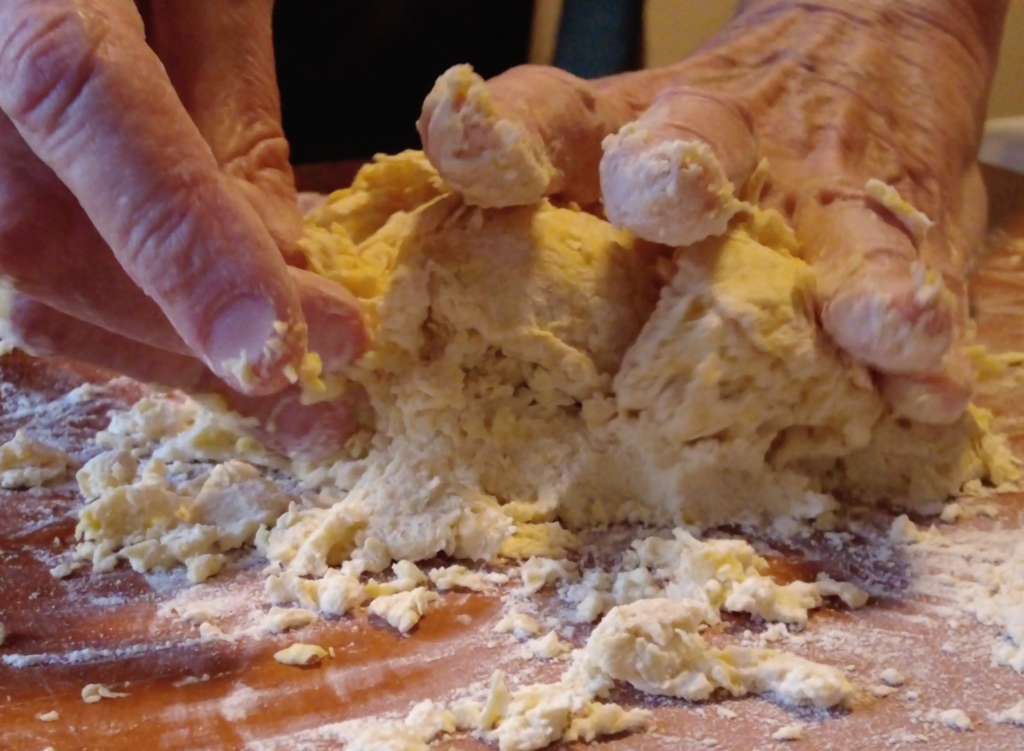
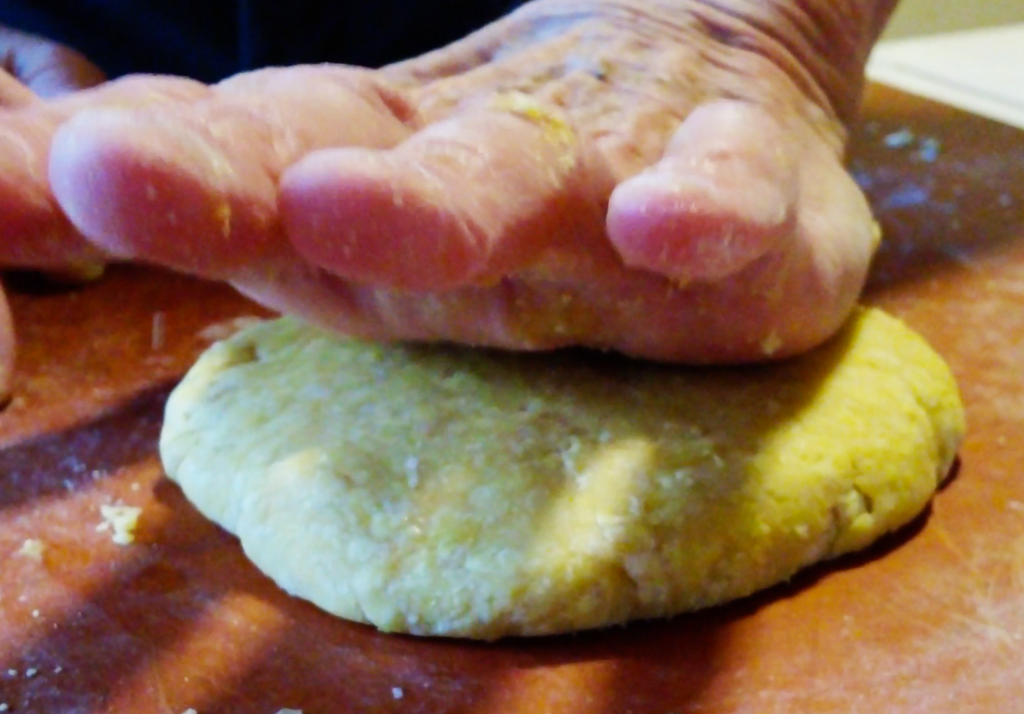
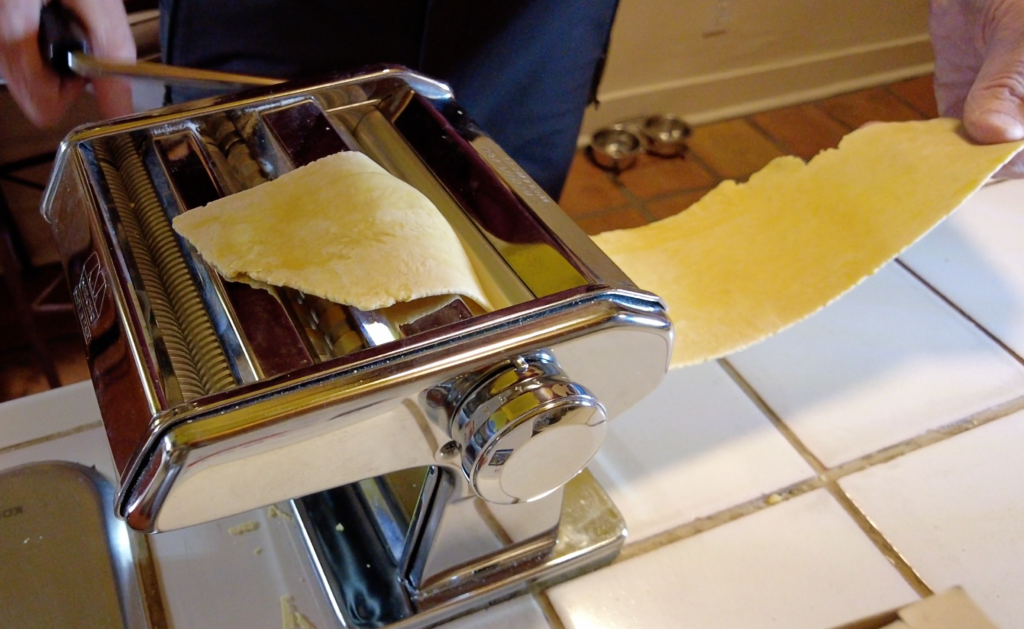

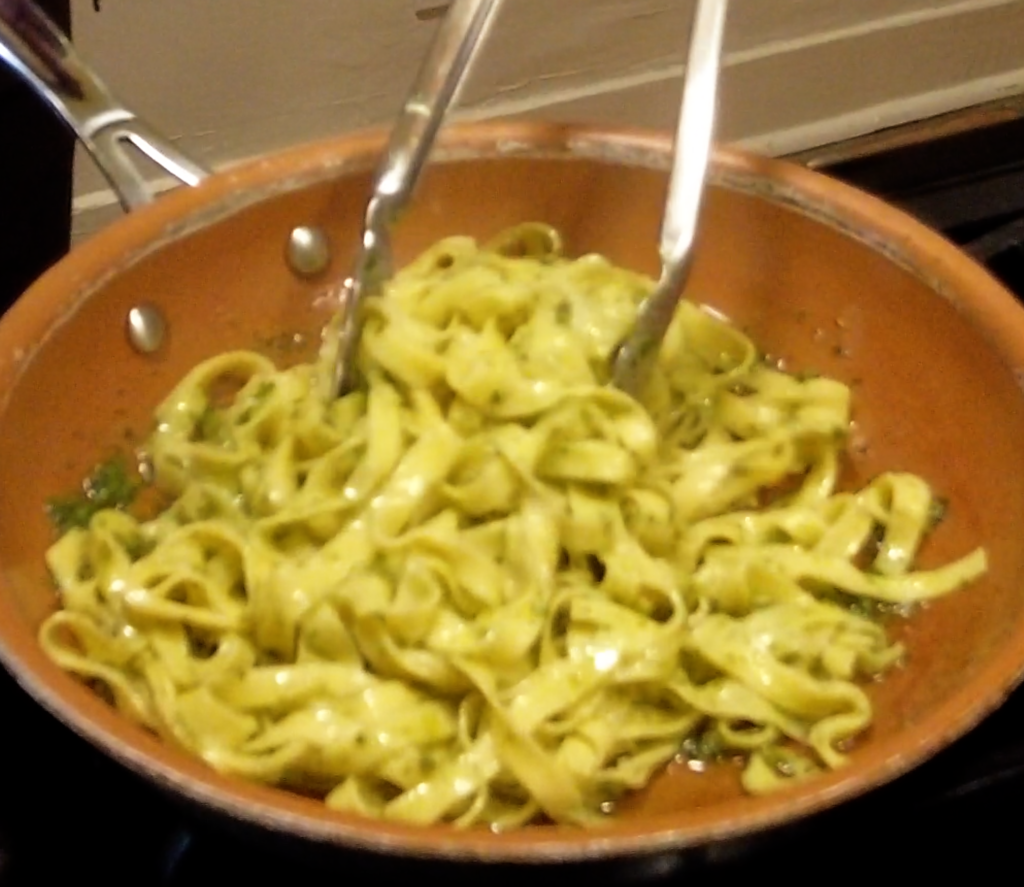
Cost-Benefit Analysis
About $1.50 per serving for this spectacularly fresh and tasty pasta. Iron and zinc, plus protein from the eggs. Toss it with some broccoli for a low-glycemic load pasta dish that delivers a day’s worth of Vitamin A and two days of Vitamin C. Not to mention fiber and a range of phytonutrients and carotenoids, Vitamins E and K and other micronutrients including iron, calcium, potassium and zinc.
Cost Comparison
$6.99 for two servings of Whole Foods’ “fresh” refrigerated bucatini. More than twice the cost of your Better and truly fresh homemade pride and joy.
The Pasta Index
From the University of Sydney’s definitive Glycemic Index database: “Pasta has a low GI because of the physical entrapment of ungelatinised starch granules in a sponge-like network of protein (gluten) molecules in the pasta dough. Pasta is unique in this regard. As a result, pastas of any shape and size have a fairly low GI (30 to 60) … Pasta should be cooked al dente (‘firm to the bite’) … Overcooking boosts the GI. Although most manufacturers specify a cooking time on the packet, don’t take their word for it. Start testing about 2-3 minutes before the indicated cooking time is up.
“But watch that glucose load. While al dente pasta is a low GI choice, eating too much will have a marked effect on your blood glucose. A cup of al dente pasta combined with plenty of mixed vegetables and herbs can turn into three cups of a pasta-based meal and fits easily into any adult’s daily diet.“